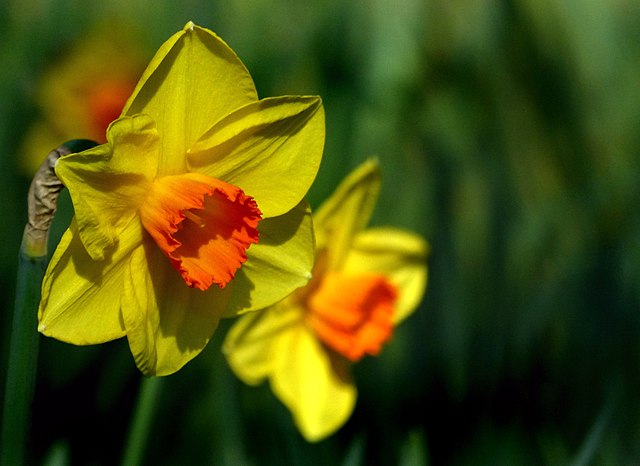
The Delights Of Daffodils
Daffodils are everywhere just now, providing a welcome splash of bright colour which signals the approach of spring. Over the years, they’ve inspired creativity in many writers and artists. Most famously of all, they inspired the Romantic poet William Wordsworth, whose poem ‘I wandered lonely as a cloud’ – often known simply as ‘Daffodils’ – is surely one of the most famous poems in the English language. It describes the unexpected and beautiful sight of a ‘host of golden daffodils’ fluttering in the breeze beside a sparkling lake. The scene is long contemplated by the speaker, and it becomes lodged in his memory, to resurface at later moments and fill his heart with happiness.
Inspired By Nature… And By Family
‘I wandered lonely as a cloud’ was based on Wordsworth’s recollection of a walk taken on 15 April 1802, with his beloved sister Dorothy in Ullswater in the Lake District. Dorothy noted in her journal that they’d seen a ‘long belt’ of daffodils along the shore of the lake, many of which seemed to dance and laugh in the wind. The words of her vivid description are echoed in Wordsworth’s poem, although Dorothy herself is not depicted in it. His wife, Mary Hutchinson, contributed what Wordsworth himself described as the poem’s two best lines: ‘They flash upon that inward eye / Which is the bliss of solitude’.
Criticised, Then Canonised
Although it’s now one of the nation’s favourite poems, ‘I wandered lonely as a cloud’ was not well-received by critics when it was first published in Wordsworth’s 1807 collection, Poems in Two Volumes. Fellow Romantic poet Byron disliked Poems in Two Volumes and wrote a negative review of it, and even Wordsworth’s close friend the poet Coleridge was rather disparaging about the collection. Nevertheless, Poems in Two Volumes became more popular, as time went on, with the general public and critics alike. When Wordsworth died in 1850, ‘I wandered lonely as a cloud’ was described as ‘very exquisite’ by the well-known liberal journal The Westminster Review.
The poem is now widely celebrated as quintessentially Romantic: it explores and celebrates the intense relationship between humankind and nature, and the power of imagination and memory, in a very personal and emotional way, reflecting Wordsworth’s belief that poetry is ‘the spontaneous overflow of powerful feelings’.
‘And Then My Heart With Pleasure Fills…’
Wordsworth’s daffodils symbolise the beauty and joy which is eternally to be found in nature. The speaker’s experience of seeing and walking among these flowers brings deep, enduring happiness which continually renews itself. Even when the speaker is feeling listless, ‘vacant’ or ‘pensive’, the recollection of the daffodils has the capacity to revive his spirits. ‘I wandered lonely as a cloud’ reminds us all to look at the natural world to find such moments of delight for ourselves.
To See Daffodils For Yourself…
To read ‘I wandered lonely as a cloud’ in full, click here.